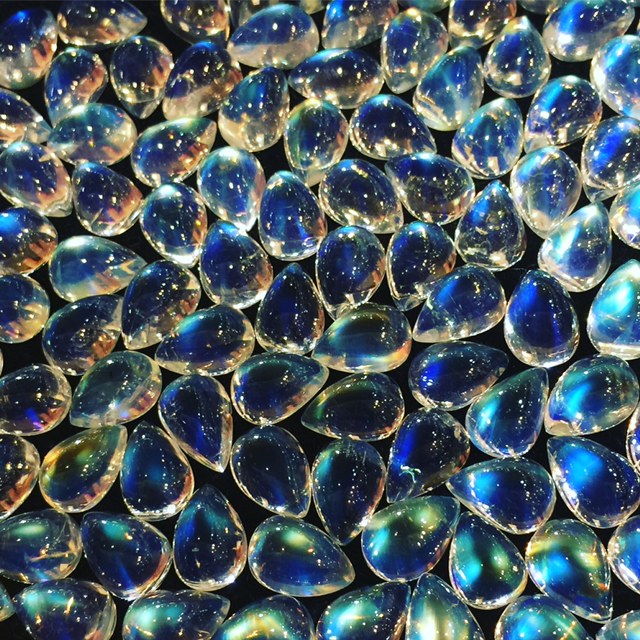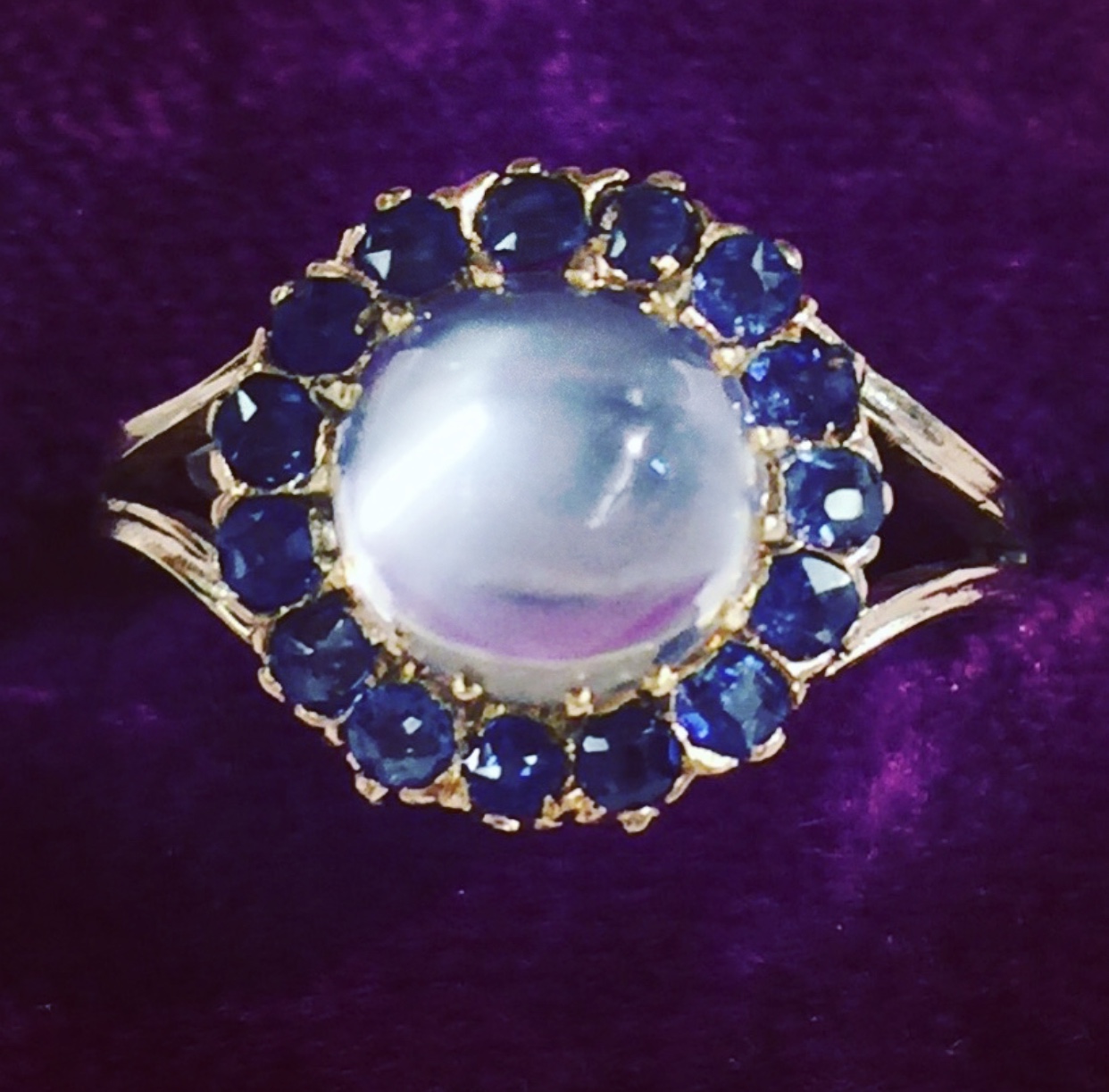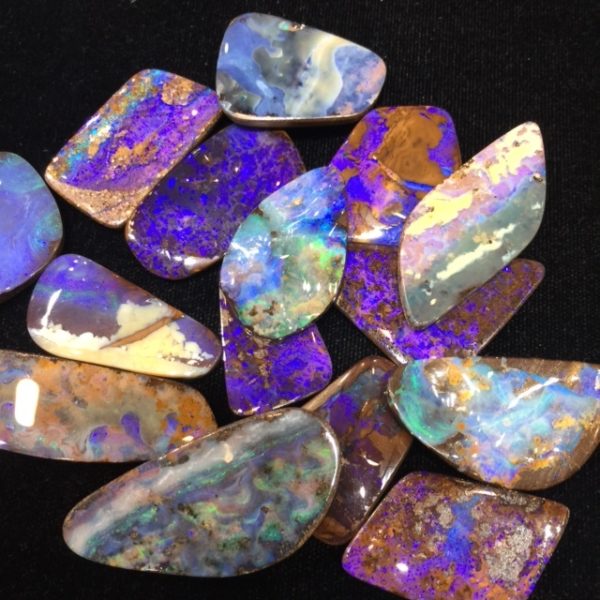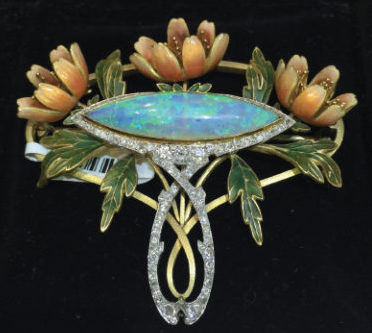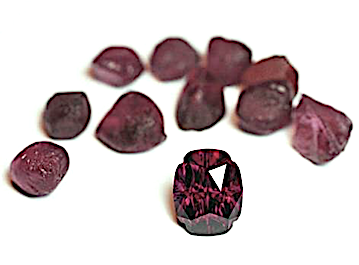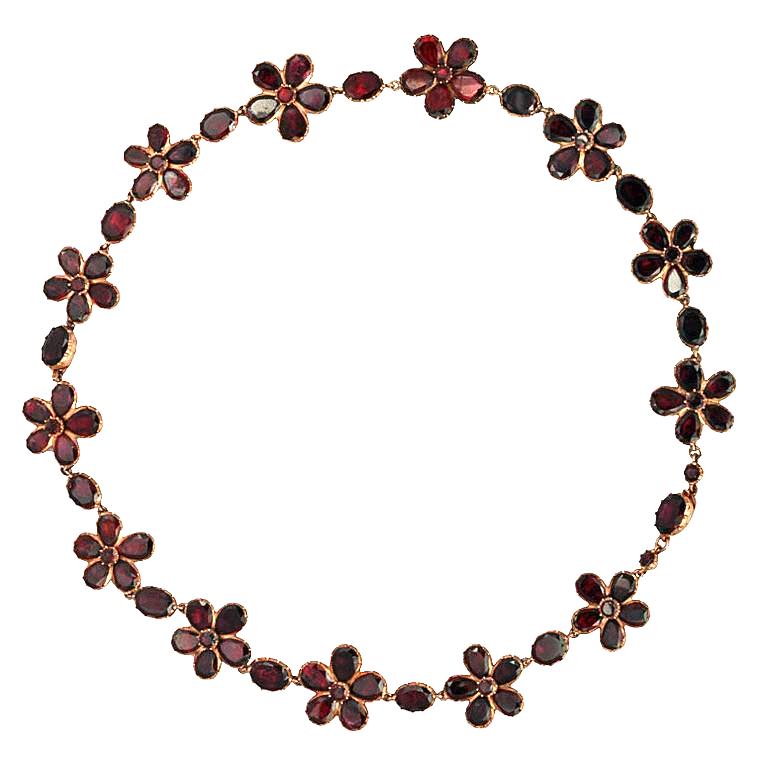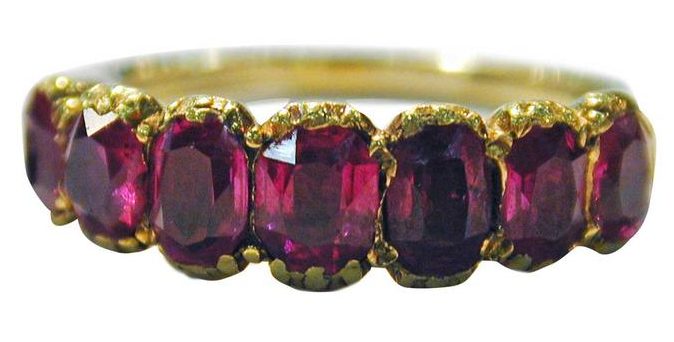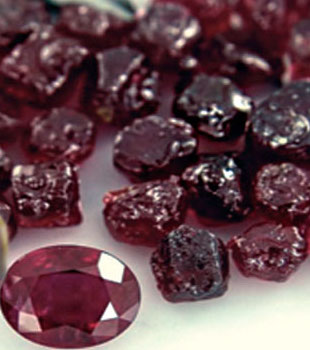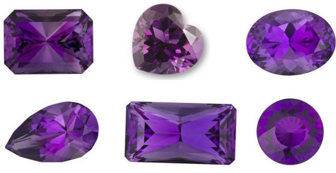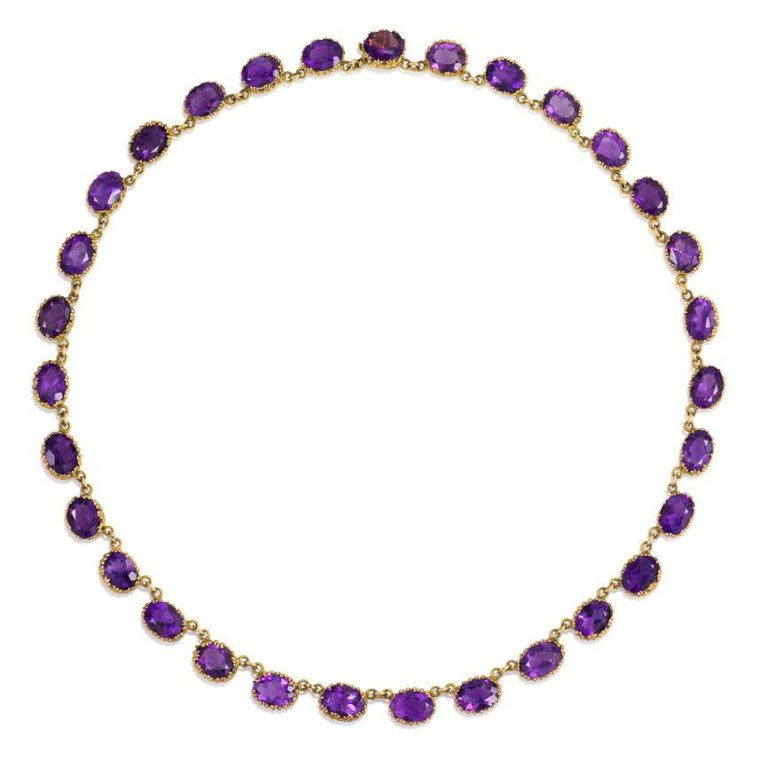Match Up: Some of Our Favorite Gems with Jewelry’s History
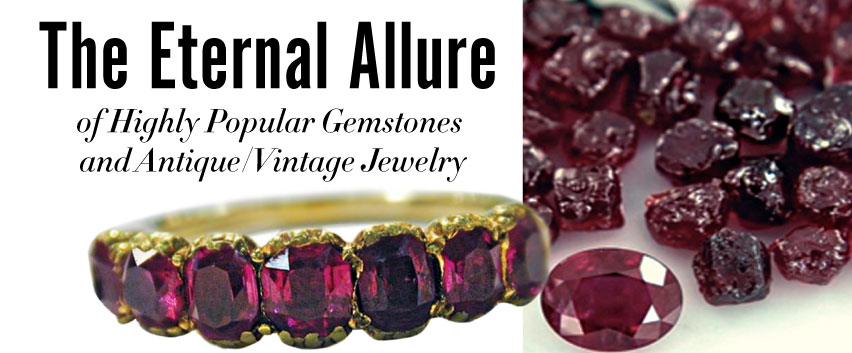

From left the right, top to bottom: Keyamour, Platt Boutique, Humphrey Butler, Spicer-Warin
When I think of jewelry throughout history—I’m immediately drawn to four aspects—the talismanic meaning, how pieces were crafted during each period, how these pieces characterize the times they were made and the gemstones that were popular from antiquity to the present. There are gems that have been around since ancient times and have remained staples of style and symbolism. And, there are those that have gone in and out of popularity but have been trending over the past 10 years.
Recently a press release appeared in my inbox, informing me that “U.S. Antiques Shows and the AGTA GemFair™ are pleased to announce that their Las Vegas events will be co-located at the Las Vegas Convention Center, beginning in June of 2019.”
This makes perfect sense when you think of how intrinsic gemstones are to precious jewels and how they reflect such a rich, famed and sometimes notorious past. They have been bargained for, traded and stolen and have always been an integral part of Eastern and Western culture, royal jewels and the pieces created by the most renowned global jewelers including Cartier, Bulgari, Van Cleef & Arpels, Boucheron and Chaumet, to name just a few.
For the international retailers who shop Las Vegas Jewelry Week and who purchase antique and estate jewelry as well as gemstones for custom designs, this is an ideal partnership in location and also can lead to offering customers information on gemstones that date back for centuries.
Here we discuss and show gemstones that from AGTA GemFair™ exhibitors that are as popular today and they were centuries ago, Additionally we talk about how these stones are featured in antique, signed and vintage jewelry from dealers that traditionally participate in the Las Vegas Antique Jewelry and Watch Fair (Emerald Expos).
MOONSTONE
- Blue Moon blue moonstones
- Roy Rover Antique Blue Moonstone and sapphire ring
Magic has always been associated with the glittery stars and “the light of the silvery moon” set, a glow in the evening sky. And, moonstone definitely reflects its namesake’s enchanted and ethereal reputation throughout different time periods and cultures. From antique to modern jewelry, these gems offer intriguing beauty and equally captivating significance. Moonstones were held in high esteem throughout history. Variations on the theme of romance and passion as well as protection and luck are all part of the mystical properties of moonstones. What more could you ask for in gem? The Romans believed that the stone was solid ray of moonlight filled with good fortune. In India it was sacred, given as a traditional wedding gift; while Middle Eastern cultures present it to couples to ensure fertility and a big happy family. From the East to the West, the moonstone’s main attribute is…love. It is associated with promoting harmony and a happy future among couples. As if that wasn’t enough, moonstones were worn for centuries by travelers for protection and to guide them in the evening hours. They allow one to open up to understanding their own character as well as others and to reveal emotions. They are one of the three birthstones for June, along with tanzanite and pearl.
TURQUOISE
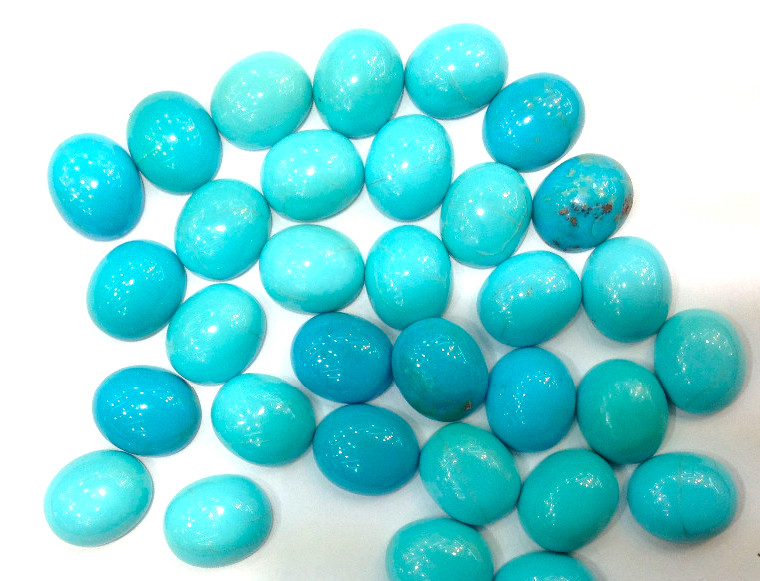
Natural Turquoise cabochons
Reportedly the first stone to be mined and set into jewelry, turquoise is also December’s alternative birthstone to zircon and tanzanite and reveals longstanding legends and symbolism that date back to ancient times.
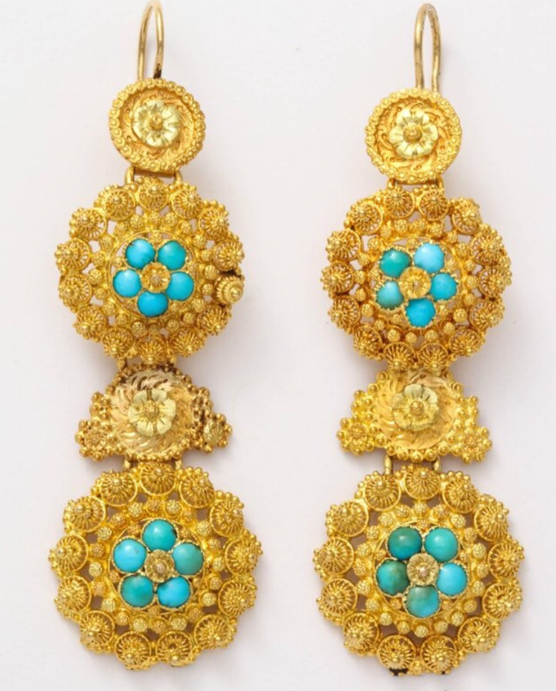
Glorious Antique Jewelry antique earrings with turquoise forget me nots and beautiful cannetille work
The earliest turquoise stones originated in Persia and were known for their pure, robin’s egg blue color. The gem also gives off a bluish-green hue, depending on what country/mine produces it. Turquoise was named after the French expression pierre torques, or “Turkish stone”, due to the trade route the stone traveled from Turkey to Medieval Europe. Revered as a talisman since it was first found, it has been carved into amulets that brought good fortune and protected the wearer from evil and harm. Fast forward to the Victorians, who loved their meanings and symbolism and believed in the ancient gem-lore that came before. They also deemed turquoise to be a fashionable due to the new calibre cuts as well as pavé settings that covered the head of serpent motifs or the full body of a dove. It was also the gemstone of the forget-me-not flower, symbolizing remembrance and friendship. Turquoise saw some signs of a comeback during the mid 20th century with David Webb and Van Cleef & Arpels. I was around for the 70s Native American jewelry revival when everyone was wearing turquoise inlaid silver rings, dangling earrings and various Southwestern turquoise cuffs. These pieces have now become vintage and collectible. Today turquoise is primarily set into rich gold and has become a seasonless gem.
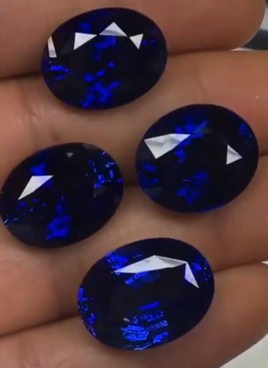
Colorline natural blue sapphires
BLUE SAPPHIRE
Medieval kings wore the gem around their necks as a defense from harm and by the 11th century, sapphires were chosen for ecclesiastical rings. In Roman times it was believed if someone were untruthful, the sapphire’s color would change. While researching my book, If These Jewels Could Talk: The Legends Behind Celebrity Gems, I found that when the first betrothal rings were given by royal families in the 14th and 15th centuries, sapphires were favored over other gems and many were passed down through generations of nobility. Sapphires symbolize romantic love, truth, fidelity and loyalty. In the 1930s sapphires regained popularity for engagement rings, worn by some of Hollywood’s most glamorous leading ladies.
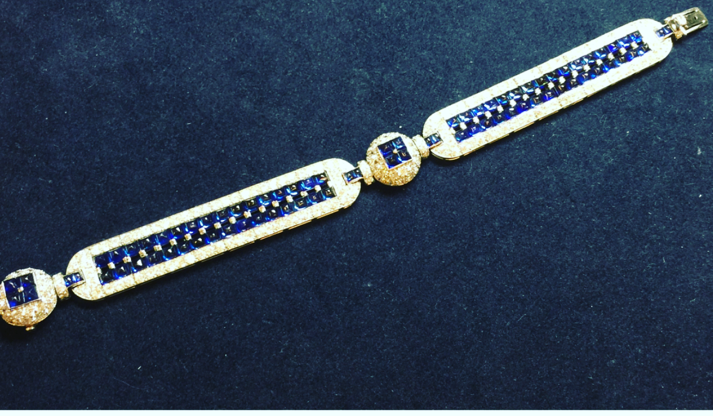
Simon Teakle Art Deco Sapphire Bracelet
It was also during this period that cabochon-cut and star sapphires were the stones of the moment as movie-goers admired the beauty of the gem on film, as worn by icons of the day. Lady Diana Spencer is credited with bringing back the sapphire engagement ring in the late 20th-century when Prince Charles proposed. Jewelers around the world wasted no time in turning out similar style rings almost immediately after Diana chose the vivid blue from a selection shown by Garrard of Mayfair, crown jeweler at the time. A global trend was born for women who wanted an engagement ring fit for a modern-day princess, strengthened in the 21st century by the passing down of the ring to Kate, Duchess of Cambridge. Today, sapphires are mined in various countries and are shown in cuts from slices to big juicy cabochons and for all classifications of jewelry. They are September’s primary birthstone.
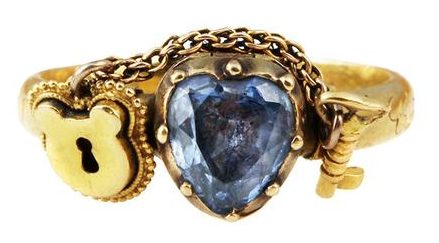
Bell & Bird’s ring features a natural sapphire heart-shaped stone in a pinched collet setting which conceals a locket compartment, also in the shape of a subtle heart. On either side of the sapphire, connected by a chain, sits a key and a lock of gold, which is symbolic of ‘key to my heart. It is inscribed ‘Caroline Queen of England 1820’. On the inside: ‘Franchise et Discretion’.
EMERALD
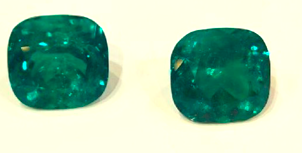
A.B.C Emeralds
These deep vivid gems have a rich history and are connected to royalty and celebrities. They are May’s primary birthstone. We have a few favorite emeralds, which became iconic in various periods throughout time. Queen Victoria set a popular trend for both serpent jewelry and this vivid gem with her emerald set snake engagement ring given to her by Prince Albert. Then, during the late 19th century through mid 20th centuries, renowned houses worked with these deep green stones. Boucheron designed pieces for the Maharajah of Patiala, whose emeralds were said to be the ‘size of apricots’. Often times, various houses were linked to the celebrities or royalty who wore their jewels. A wonderful example is Elizabeth Taylor who wore Bulgari’s emerald and diamond pieces: brooch, necklace with detachable pendant, ring and earrings. Marlene Dietrich favorite gem was noted to be emerald and she had pieces created by some of her favorite house at the time, Paul Flato and Trabert &Hoeffer-Mauboussin that she wore in press photos and films such as Desire.
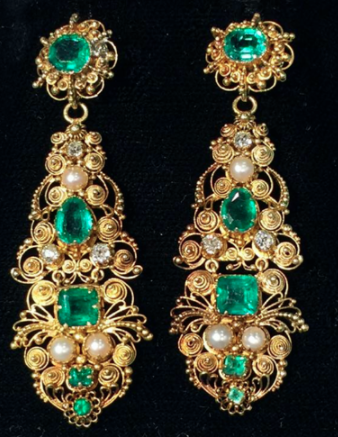
Moira FIne Jewelry Antique earrings in gold and emeralds
There were also other famed emerald engagement rings in addition to Queen Victorian emerald set snake ring. In England in 1922, when Princess Mary appeared in public wearing an emerald engagement ring, the price of emeralds soared—sealing the gem’s status as a favorite among the stylish in society, long before the term ‘alternative bridal rings’ was coined. Over a decade later, her brother, Edward Prince of Wales abdicated his throne for Wallis Simpson and proposed to her with a Cartier designed emerald engagement ring, which she eventually updated to meet the changing times but kept the original shank with the sentimental inscription, “We Are Ours Now, 27.x36”. Then in the 1950s, another style icon received an emerald engagement ring. Jacqueline Bouvier was proposed to by John F. Kennedy with a Van Cleef & Arpels 2.79-carat cut emerald mounted next to a 2.84-carat diamond, accented with tapered baguettes. In 1962, Jackie Kennedy had the ring reset with additional diamonds to reflect more modern times, just as The Duchess of Windsor did before her. Trapiche emeralds are all the rage for current jewelry but classically cut emeralds will never go out of style.
OPAL
- BILL Gangi Boulder Opals
- Aaron Faber Gallery Art Nouveau Brooch
“There is in them a softer fire than the ruby, there is the brilliant purple of the amethyst, and the sea green of the emerald – all shining together in incredible union. Some by their splendor rival the colors of the painters, others the flame of burning sulphur or of fire quickened by oil.” This how Roman scholar Pliny the Elder described the rare beauty of opals. October’s birthstone, with its fiery luminescence and vivid hues that change with the light, has acted as a metaphor for Shakespeare and Ralph Waldo Emerson. Opals have also been written about by other great authors and playwrights such as Mark Twain, John Steinbeck and Oscar Wilde.
Throughout history, they have been gemstones with a rich cultural past of lore and legend. And, there was a time when opals were considered bad luck. The most widely known story of opals bringing ill fortune to the wearer was derived from Sir Walter Scott’s Anne of Geierstein, published in 1929. In the novel, the character of princess Hermione wears a beautiful opal in her hair, which sparkles with iridescence when she is good humor, but flares red when she is not. For this reason, the gem is sprinkled with Holy Water, causing it to lose its luster. The next day there is nothing left of Hermione but a small heap of gray ashes found on her bed. This caused the opal market to crash. But after a huge discovery of opal mines was made in Australia, a British Territory, in 1870, Queen Victoria wore opal jewelry to negate the superstition. She also presented her friends and five daughters with gifts of fine opals. After the rumors were dispelled, opals (which derived its name from “opalus”, which means “to see a change in color”) were designed into all categories of jewelry throughout the 19th-early 20th centuries. Over the past five to 10 years, all types of opals have become one of the most widely regarded gems among antique and modern-jewelry collectors alike
GARNET
- Jewels From The Woods Garnets
- Lowther Antiques Georgian Garnet Pansy Necklace
Friendship, devotion, compassion – these are just some of the meanings associated with garnets – evoking the sentimentality and significance of January’s birthstone. In the Hindu culture, garnets are associated with the first chakra, or the root chakra, at the base of the spine, meaning healthy sexual activity and feelings of security and stability. The sometimes fiery red pyrope garnet or more purplish deep majestic red almandine garnet is one that is imbued with many legends and has a long historical and storied past. It is also a stone that is available in almost every color – from deep orange to vibrant green – in addition to the red variations. In Rome, garnets were widely traded gemstones and carved garnet signet rings were used to stamp the wax that sealed the contracts on important documents. Large deposits of red garnet were discovered in Bohemia in Central Europe around the 16th century, which would become the main focus of jewelry in the 18th and 19th centuries. In the Georgian period, garnets were one of the most desirable gemstones – they were affordable and complemented almost every complexion. These garnets were flat cut and enhanced by backing them with tinted metal foil in a closed-back setting. During Victorian times, garnets were rose cut and were set into low carat gold. There was also a trend towards the traditional handcrafted Bohemian design, which was designed in gilt metal and showed great beauty in a cluster-type arrangement such as the sun and the moon, horseshoes, and floral motifs. Today garnet in all of its red permutations as well as other colors remains one of the most popular stones among jewelry enthusiasts. Most recently large cabochon garnets are fashionable again and are set into elegantly sculpted settings.
RUBY
- The Spare Room Georgian Ruby RIng
- Sara Gems Rough and one polished natural ruby
The stones the color of blood and fire have been around for centuries and have had a starring role history. Due to their deep rich hue, they are the gem most associated with passion and desire. Speak about a stone with a romantic past! The word ruby comes from Latin ruber, which means ‘red’, and in the ancient language of Sanskrit, Ratnaraj, which is the word for ruby or ‘king of precious stones’. Rubies were first traced to Myanmar—a source since 600AD and were revered by great European adventurers, gem hunters and experts including Marco Polo, and Jean Tavernier. These vibrantly saturated stones from pinkish red to pigeon blood were believed to hold the power of life. By Medieval times they were worn as adornments and many thought them to be talismans that guaranteed wealth, wisdom, beauty, and everlasting love. They were popular during all time periods from Georgian through the mid-20th century. While much of Edwardian/Belle Époque jewelry was all white—platinum, diamonds and pearls—ruby added a touch of color. It also figured into Art Deco designs and was desired in all cuts and sizes. Elizabeth Taylor’s two great loves, Mike Todd and Richard Burton gave her Cartier and Van Cleef & Arpels’ ruby and diamond jewels. Cartier designed the three cabochon and diamond ruby pieces that Princess Grace of Monaco wore as a diadem and as separate clips. July’s birthstone, they add allure and romance to any jewelry wardrobe.
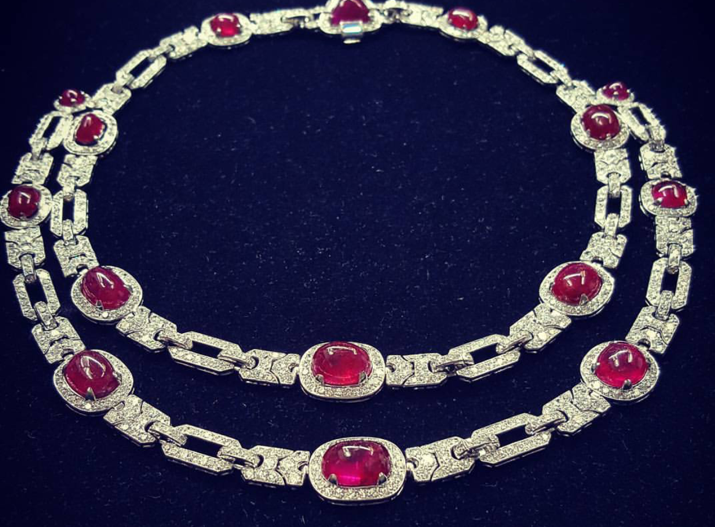
Pat Saling Natural Ruby and DIamond Art Deco Necklace
AMETHYST
The imperial color purple was worn by the rulers of the Byzantine and Holy Roman Empires, thus amethyst became associated with Ecclesiastical jewels and European aristocracy, adorning the fingers of bishops as well as the coronation regalia of British royalty. In the 18th-century, amethysts were set into closed foil-backed Georgian basket rings and were a popular stone for antique rivieres. The 19th-century discovery of a large deposit of amethyst in Brazil lowered the cost, allowing large amethysts to be set more frequently into jewelry throughout the 20th century. When we talk about the spiritual quality of amethysts, we go back to Greek legends that associated amethyst with Bacchus, the god of wine, which the color of amethyst resembled. It was believed that wearing amethyst prevented drunkenness—this branched out into a broader meaning of clear-headed and quick-witted thinking in battle and in business affairs. Often seen as a stone of peace and calm, it was thought to soothe nightmares.
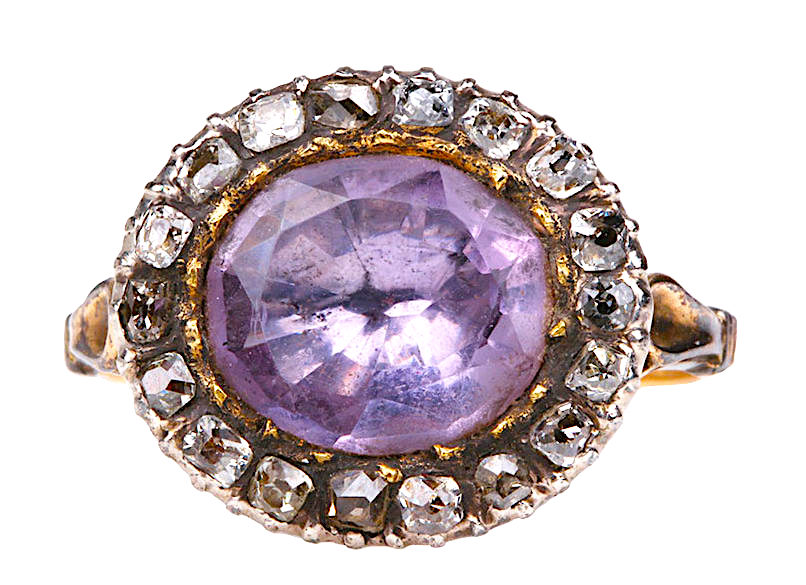
Bell & Bird Georgian Amethyst and Diamond Ring

